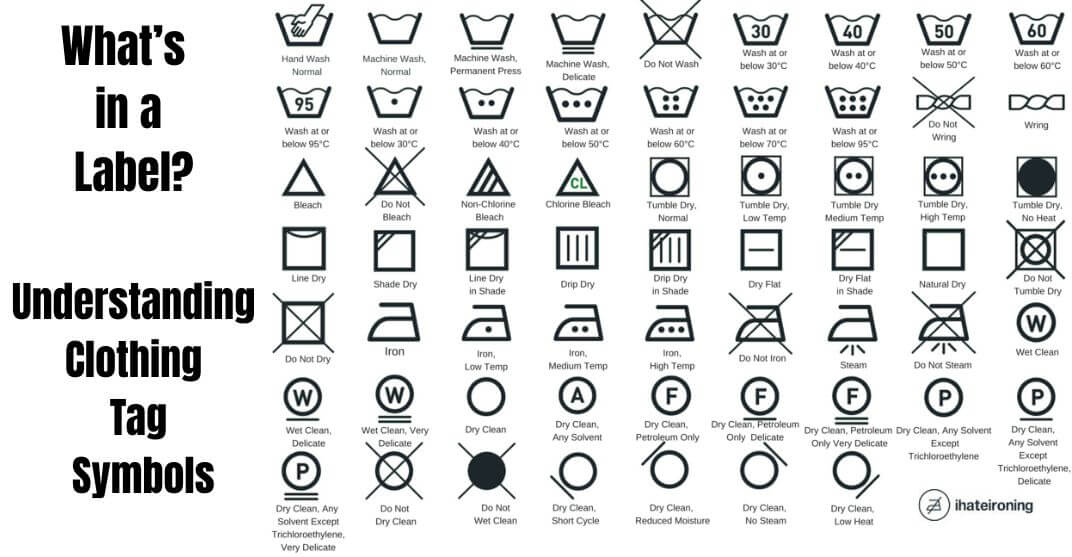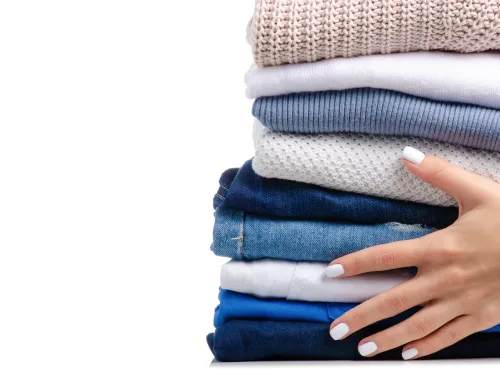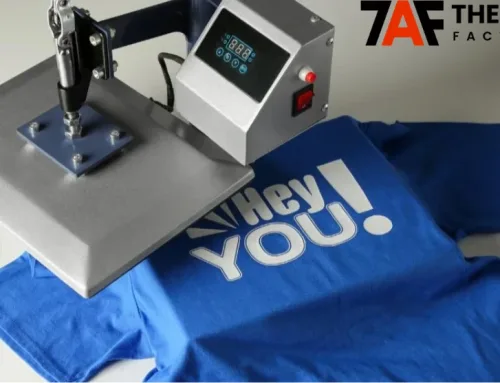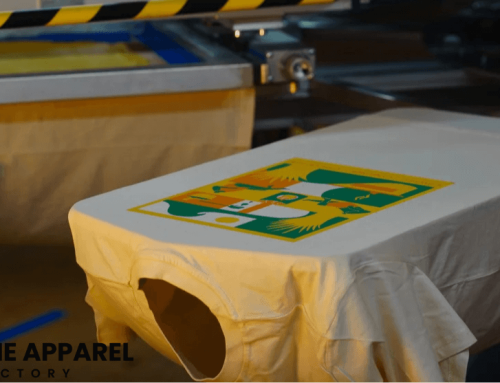
Ever looked at a clothing tag and felt like you were decoding secret laundry hieroglyphics? You’re not alone. Those tiny icons—squares, circles, triangles, and lines—carry big meanings. They quietly tell you how to wash, dry, iron, bleach, or dry clean your clothes. Yet most people ignore them and risk shrinking, fading, or ruining their favorite pieces.
Understanding clothing tag symbols is easier than it seems. Once you know what these laundry care symbols mean, you’ll feel more confident doing laundry and avoid unnecessary clothing damage. Whether you’re sorting clothes at home or managing bulk orders for a business, this guide will help you decode every label in your closet.
Why Clothing Tags Matter More Than You Think
Ever shrunk your favorite sweater or faded a brand-new T-shirt? It usually happens when we ignore the washing instructions on the label. Laundry tag symbols are not just helpful—they’re essential.
Here’s why:
- They prevent damage like shrinking, fading, or stretching
- They help you choose the right cleaning method
- They extend the life of your clothing
- They save you money on replacements
The goal is simple: follow the instructions once, and you won’t have to replace your clothes early. With this knowledge, you’ll shop smarter, do laundry more efficiently, and even better maintain your professional uniforms or retail apparel.
Why You Should Always Read the Label
The small tag inside your clothing holds more power than you think. It’s a complete care guide designed by manufacturers based on fabric type, dye, and stitching. Ignoring it can lead to:
- Color bleeding or dullness
- Fabric shrinking or warping
- Stiff or itchy textures
- Misalignment in seams
- Loss of elasticity in stretchy garments
How to read laundry labels should be a basic skill, yet it’s often overlooked. Mastering this lets you enjoy your favorite outfits longer while maintaining their original look and comfort.
Decoding the Most Common Clothing Tag Symbols
Understanding laundry symbols doesn’t require a degree. Here’s a simple breakdown of what each major category includes.
Washing Symbols
The washing care symbols look like a bucket of water.
- Tub Icon: Machine wash
- Hand in Tub: Hand wash only
- With 30°C or 40°C: Maximum temperature in Celsius or Fahrenheit
- With lines underneath: Gentle or delicate cycle
These fabric wash symbols help you match water temperature and spin speed to your fabric type.
Drying Symbols
The drying symbols are square-shaped.
- Inside a square: Tumble dry
- With one dot: Low heat
- With two dots: Medium heat
- With three dots: High heat
- With a horizontal line: Dry flat
- With three vertical lines: Drip dry
- With diagonal lines in the corner: Shade dry
- Over a square or circle: Do not tumble dry
Using the correct drying symbol meaning keeps your clothes from shrinking or getting stiff.
Ironing Symbols
The iron icon is simple but crucial.
- Iron with one dot: Low heat
- Iron with two dots: Medium heat
- Iron with three dots: High heat
- With steam lines: Steam iron allowed
- Iron crossed out: Do not iron
Following the ironing care symbols ensures your fabrics don’t scorch or burn.
Bleaching Symbols
Bleach-related icons always use triangles.
- Triangle: Bleach allowed
- With lines inside: Use non-chlorine bleach
- Triangle crossed out: Do not bleach
These bleach symbols on clothes help you maintain the fabric color and texture.
Dry Cleaning Symbols
Dry cleaning icons are usually circles.
- Circle: Dry clean only
- With ‘P’ or ‘F’: Use specific solvents
- Circle with a cross: Do not dry clean
These symbols are especially important for delicate fabrics like silk, wool, or formalwear.
How Clothing Tag Symbols Help You Care for Apparel
Different types of apparel require specific care based on the materials used and their structure. Here’s how reading your clothing label instructions can protect each kind.
T-Shirts and Casual Tops
Most T-shirts and tank tops are machine washable. But check for symbols for tumble dry—many shirts shrink if dried on high heat. If the iron symbol has one dot, use low heat to avoid burning the print.
Jeans and Denim
Denim can fade or warp if washed in hot water. The washing tag symbol often shows a tub with cold water. Avoid bleach symbols unless the jeans are white or pre-treated for bleach use.
Formal Shirts and Dress Pants
Dress Shirts and Pants usually come with multiple symbols: dry clean, gentle cycle, or low heat. Check the dry clean symbol, especially if the fabric is wool-blend or silk-lined. Ironing may require low to medium heat.
Activewear and Gym Clothes
Made from synthetic fibers, activewear may show no bleach symbols and require air drying. Always check for the do not tumble dry icon to prevent heat damage.
Jackets, Coats, and Outerwear
These outerwear items may have complex tags—often involving dry clean only symbols or water temperature limits. Down jackets might include special care icons to prevent clumping or fiber damage.
Uniforms and Workwear
Following the apparel washing guide tags ensures your uniforms & workwear last longer and retain their professional look. This is especially true for brands like Dickies, Red Kap, or Carhartt.
Whether you’re a consumer or a clothing business, knowing how to wash different clothes improves satisfaction and reduces waste.
Fabric-Specific Laundry Tips
Laundry symbols only tell part of the story. Different materials react differently to heat, water, and chemicals. Here’s how to pair fabric-specific washing symbols with practical care tips:
- Cotton: Machine washable, but prone to shrinkage. Use warm or cold water.
- Wool: Needs cold water and gentle cycles. May require dry, flat drying.
- Polyester: Durable and easy-care. Tolerates machine wash and tumble dry.
- Silk: Often labeled dry clean only. Avoid harsh washing or drying.
- Rayon/Viscose: Handle gently. Air dry to avoid shrinkage.
- Linen: Best washed in cold water and air-dried. Avoid over-drying.
If you’re dealing with blends, follow the guidelines of the most delicate fabric in the mix.
Global Variations in Care Label Standards
Did you know not all clothing care labels follow the same rules around the world? Here’s how some standards differ:
- United States: Uses the ASTM D5489 guide.
- Europe: Follows the GINETEX system, with a focus on symbols over words.
- Japan: Uses pictograms with additional Kanji notes.
- Australia: Similar to European symbols but may vary slightly.
- Canada: Often bilingual and matches U.S. standards.
When importing or exporting clothes, knowing international laundry symbols prevents mishandling garments in different regions.
Tips to Remember Laundry Symbols Easily
Even though clothing label meanings seem like a lot, you don’t have to memorize them all. Try these tips:
- Print a laundry symbols chart and tape it near your washer or dryer
- Use apps like “Laundry Day” or “Laundry Care” for a quick reference
- Keep a small tag guide card in your laundry basket
- Bookmark this guide on your phone for easy access
Learning how to read fabric labels can turn laundry day into a stress-free task. Plus, it’s especially useful if you’re running a laundry business or managing uniforms.
Common Mistakes to Avoid
Even with a laundry label in hand, mistakes still happen. Avoid these pitfalls:
- Assuming one symbol applies to all, each icon gives a specific instruction.
- Using hot water on “cold wash only” fabrics.
- Tumble drying delicate items is not designed for it.
- Ironing synthetics on high heat.
- Bleach colored items with general-purpose bleach.
Following fabric washing instructions is simple, but skipping them could cost you.
Conclusion: Small Symbols, Big Difference
Every shirt, jacket, or pair of pants tells a story through its tag. By learning how to read clothing tags, you’ll avoid costly mistakes and preserve the quality of your wardrobe. These symbols may be small, but they carry important instructions that can make or break the life of your garment.
Whether you’re a laundry beginner, a parent managing household loads, or a business selling apparel in bulk, understanding these care tags adds convenience, savings, and peace of mind.
So next time you’re about to toss something into the washer, pause for a second and check the label. It’s the easiest way to keep your clothes looking their best.
FAQs
Q: What do clothing care tag symbols mean?
A: They show how to wash, dry, bleach, iron, or dry clean your clothes safely.
Q: Can I bleach any clothing?
A: No. Only items with an open triangle symbol can be bleached. If it’s crossed out, skip it.
Q: What happens if I ignore care tags?
A: Your clothes may shrink, fade, or lose shape, especially delicate or expensive items.
Q: Are laundry symbols the same worldwide?
A: Most are similar but can vary by country. Always double-check with international clothing tag guides.
Q: How can I remember all these laundry symbols?
A: Use a printable chart or a free laundry app for quick access when doing your laundry.
Published on:
May 2, 2025





